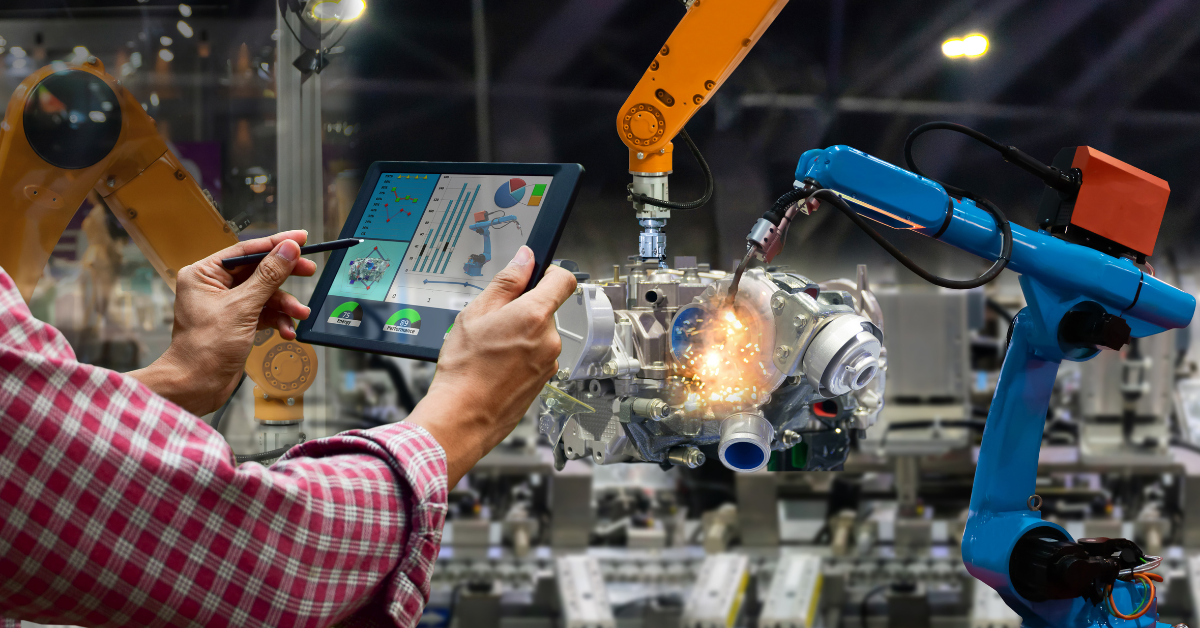America is amid a labor shortage; the population has increased and baby boomers are retiring, but the workforce isn’t keeping up with this growth. This leaves businesses scrambling to find qualified employees, leading companies to cut back on hours or raise wages. But as consumer demand is high and companies continue to struggle with supply chain issues, what are companies doing to work in with this current landscape? What if instead of hiring an employee, you could build one? For this reason, robot orders in North America in Q2 2021 were up 67% compared to Q2 2020.
Unemployment remains high, with 7.4 million unemployed workers in America as of October 2021, up from 5.7 million last year. However, it’s not that companies aren’t hiring. In fact, it’s quite the opposite. Recently, the Denver International Airport hosted a job fair to fill 1,000 vacant positions. The airport expected to see as many as 5,000 eager prospects but was met with a turnout of only 100 job seekers. With a lack of employees looking for work, company workforces are being impacted.
These massive shifts within the American workforce are dramatically changing how companies staff their business. With the demand for labor being high and the supply of workers being low, robotics and AI are taking over jobs traditionally done by humans. This trend will only continue to grow as the workforce becomes more automated. By 2025 machines and AI are expected to replace as many as 2 million workers in manufacturing alone. But, from a survey done by the International Federation of Robotics, nearly 70% of employees believe robotics and automation will offer the opportunity to qualify for more skilled work.
Here are some of the ways we anticipate the workforce will transform.
1. A Collaboration with Co-Bots
Co-bots, or collaborative robots, work alongside people in workshops, factories, and laboratories globally, performing many tasks. Co-bots have been improving the performance of human employees for decades. Co-bots perform tasks too tedious or dangerous for humans to do, so they can free up employees to do more valuable work. For example, co-bots work alongside people and perform automated, repetitive, and sometimes complex tasks.
Co-bots are the future of the workforce; they’ve been around for years and are going nowhere, allowing businesses to staff at a level that helps them stay productive and efficient while maintaining a high level of safety due to the co-bot’s capabilities. It is predicted that the global co-bot market will reach $1.94 billion by 2028, increasing $669.9 million in 2019.
2. Humans for Higher-Level Tasks
Since the workforce is changing dramatically, it’s essential to equip your human employees with skills that can help them compete in this new world. One potential solution is upskilling: providing employees with professional training opportunities to develop their skills. This is essential as automation introduces new and changing jobs. Upskilling allows employees to focus on higher-level tasks rather than repetitive and simple tasks that robots and artificial intelligence can perform. It also has the opportunity to increase the overall engagement and satisfaction of the job.
3. Competitively Recruit and Retain Employees
Treating employees right can play a role in eliminating talent outflows by providing more career development opportunities and increased competitive compensation levels. This is important since disengaged U.S. employees cost companies $550 billion annually. Businesses can attract employees by giving fair pay and fair treatment, including a safe work environment.
In one of our recent polls on LinkedIn, we found varied perspectives as to what this may look like. For some, the most significant incentive may be an increased hourly rate, while for others, it may be benefits like child care and PTO or being provided with a more fulfilling job. Whatever the driver may be for current and prospective employees, employers can attract and retain talent by meeting their demands for competitive compensation.
4. Implementing Innovative Processes
Innovation in assembly processes could also help cure labor shortages while increasing the productivity of employees. Innovation also leads to advancements in technology, enabling businesses to implement automation for lower-skill or repetitive tasks. Instead, human workers can focus on more complex and fulfilling work, requiring critical thinking and creativity.
Preparing for the Workforce Evolution
One way for companies to prepare for the future of working is to increase their employee’s skills so they are ready for the new jobs that will arise with workforce changes. According to the Association for Talent Development (ADT), companies that offer comprehensive training programs have 218% higher income per employee than companies without formalized training. When coupling this with the robotic movement that’s taking place, a company might teach its employees how to maintain robotic systems on an assembly line instead of requiring a third-party repair person and causing production delays. Or, they can train them to work collaboratively with these systems. With these tools, businesses can continue operating while cutting down on labor costs while increasing efficiency and reliability.
The use of artificial intelligence and robots will change the way we work. If you want your business to thrive in the future, start preparing now by investing in innovation by implementing current robotic technologies to improve efficiency. At the same time, show how valuable your human employees are by treating them fairly with competitive salaries and benefits. The workforce of tomorrow may not be what you expect it to be. Still, if you’re prepared for that reality, then perhaps your business can overcome current challenges when robots and AI enter your business operations. Don’t wait until it’s too late; prepare today so that tomorrow is a little easier on your company.

